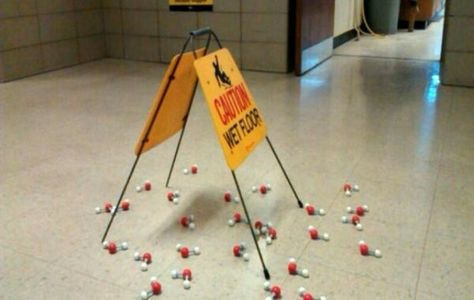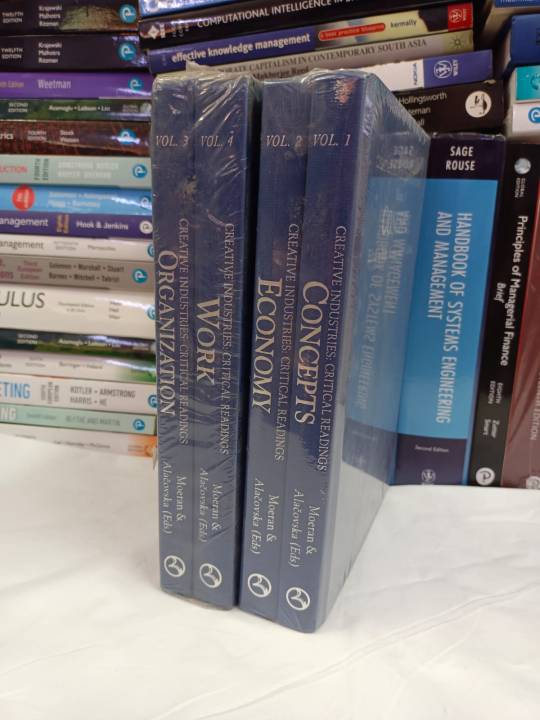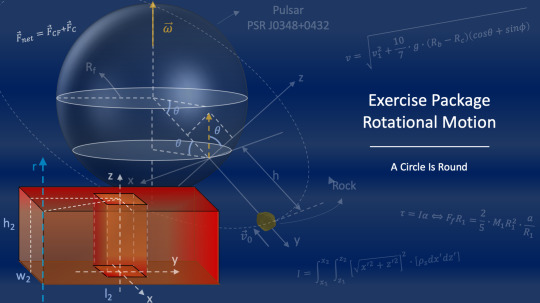#SCIENCE. TECHNOLOGY. ENGINEERING. MATHEMATICS.
Explore tagged Tumblr posts
Text
My group of college friends and I were talking and we came to the conclusion that everyone that is a stem major has some form of neurodivergence. Mostly adhd, with some other stuff sprinkled in. And now that we've talked about I refuse to believe anyone that is neurotypical would willing put themselves through the shit stem majors go through
#adhd#stem education#stem#women in stem#stem major#science#technology#engineering#mathematics#college#university#neurodiversity#its the neurodivergency#neurotypical
179 notes
·
View notes
Text
nothing’s wrong- i’m just a STEM student…

[i rarely see stem rep- so here’s the extended edition of ‘stoners in stem’ that highlights the parts of this life that i find myself loving ;p]
- swerving around countertops and oblivious peers- doing your best to keep the various beakers balanced on top of the books you’re holding
- all eyes being drawn to you when something arises that stumps the rest of your friends
- falling into the habit of a heavy step- never wanting to sneak up on someone in the lab (still getting ‘oh! you startled me!’ comments, nonetheless)
- avoiding small-talk like the plague
- the constant gathering of three or more students (and the occasional staff) out behind the building- trading cigarettes and spectating on arguments that couldn’t wait five minutes for someone to finish their smoke
- ‘do you have a lighter?’ ‘no...? just- light yours on mine.���
- unfortunate clashes between the scientific mind and the scientific heart
- calculated actions, then second-guessing your results; maybe just one more test...
- the static in the air as everyone watches an experiment expectantly, pencils and graph paper ready for if it succeeds- a fire extinguisher and open doors for if it fails miserably
- dark and smudged eye makeup to compliment the ever-omnipresent dark circles you wear like a badge of honor
- harboring a distaste for bottles and containers made with material that has no translucence whatsoever (how are we supposed to see how much is in there if holding it to the light does nothing?)
- panicked glances at your peers when you hear the jingle of keys coming down the hall (you should get rid of the evidence)
- narrowed eyes at the calculations in front of you, feeling like the visual representation of ‘?!?!’
- ‘what were you trying to accomplish?’ ‘i don’t know--- not this!’
- watching in amazed amusement as someone enters the room after-hours, lights a joint with a space heater, and gestures for you to follow--- you and a few others aren’t far behind
- the type of laugh that echos through the building; loud and sudden as it’s ripped from your chest
- bouts of blank stares as you work through something in your mind--- only coming-to when the person in front of you shifts uncomfortably under your empty gaze
- the heavy silence that rests in the darkness when you know you aren’t falling asleep anytime soon
- the first part of your notebook being neat and color-coded
- the rest being vaguely sectioned and underlined instead of highlighted (all your highlighters and pens have been lost or lent out--- you had to borrow this one)
- playlists that range from loud and angry, to gentle and repetitive--- both can help you focus
- ‘did you see that?’ ‘no, i... blinked...? on accident.’ ‘... fine- let’s start over.’
- screeching when a concoction begins to overflow, everyone gathering like a flock of birds to lend a hand or screeches of their own
- going out for a smoke one day and noticing a small handheld torch on the fire extinguisher; ‘communal lighter’ is scrawled on a piece of graph paper taped to the brick above it. thank god for the engineers
- wishing you had payed attention in second grade when learning your times tables
- slippery cobblestone that shocks you awake when you lose your footing in the mornings
- constantly looking around--- startling your friends when you stop mid-sentence to glance alarmingly over your shoulder (‘what...?’ ‘...’ ‘seriously, what?!’ ‘mmm... it’s nothing, never mind,’)
- staring blankly at people as they tell you their deepest darkest secrets (a reoccurring phenomenon) because you're running a bajillion different programs in your brain on two hours of sleep, and shit man.. yeah that's crazy that you did that ha ha *slow blink*
- the cold in the morning, the heat in the afternoon, and the chill returning in the evening--- all telling you that fall has arrived; sweaters beginning to show up under lab coats
- someone sprinting intensively across campus--- papers flying from their grasp and out of the stacks of books, binders, and folders clutched in their arms; another person following close behind--- picking everything up and quickly chasing after them
- the inked mustaches and tattoos drawn onto the plastic model skeleton that’s older than you are
- the burning feeling in your chest when someone mentions a theory or standpoint that you despise; sending them a glare and a shake of your head- but not having the energy to debate them on it (if they want to be wrong, that’s their problem)
- tapping your fingers on things to count instead of outright holding your hand in front of you
- being described as ‘intimidating’ despite often feeling uneasy around people yourself (they think that you know something they don’t) (and they’re right)
- vocal changes in tone being the height of comedy in the lab; there aren’t many other ways to safely express humor when dealing with dangerous substances
- ‘yo check this out---’ *sets off fire alarm*
- the suffocating pause after hearing ‘did someone leave the gas on?’
- the mixed reactions when a spider appears. everyone moves to crowd around it, or, alternatively, towards the other side of the room; one person is grabbing a striker while others scream at them to leave the poor thing alone. eventually, someone just scoops it up and leaves the room. they’re gone for the rest of class
- the feeling of utter despair as you realize that the page you need has been ripped out of your textbook
- developing the immediate response of dropping to the floor when something explodes near you; this reaction follows you to the street where cars backfire and gunshots ring through the air, or in your home where people pop air pillows from the packages they receive.
- the unanimous hope that at least one person near you understands the topic just a little more than you do
- growing to find comfort in the constant aura of secrecy that surrounds everything around you (but hoping you never get used to the rush of being let in on those secrets)
- the buzz of the first few minutes of class--- when everyone is stashing away their jewelry and comparing notes from the previous session; someone is laughing out in the hall, and the countertops feel like snowmelt under your arms
[i could go on and on... but i’m not gonna <3]
#stem#stoners in stem#chemistry#chem#science#earth sciences#physics#geology#astronomy#psychology#mathematics#technology#coding#engineering#engineer#physicist#chemist#mathematician#women in stem#robotics#computer science#chemistry aesthetic#stem aesthetic#dark academia#academia#academic#studyblr#tag yourself#historical academia#txt
21 notes
·
View notes
Text
Hey everyone - two updates!
1) If you’re not already, feel free to message me to join our Women in STEM Discord group! It’s open to women studying STEM degrees at university/college to chat and study together. It’s also very chill so if you don’t check it for months don’t worry, neither do some of us haha. (and apologies in advance if it takes me a day or two to reply to your DM)
2) I’m starting my first IT internship soon! Can’t say too much, but it’s for a fairly big company and I’m very excited to start.
#studyblr#comp sci#stem#university#computer science#software engineering#engineering#science#math#applied mathematics#operations research#biology#chemistry#physics#astronomy#information technology#mechatronics#robotics#women in stem#stemblr#women in tech
137 notes
·
View notes
Text
Te Mechanics

Te is a function that defines objects by their interactions with other objects (Je) while also experiencing them as having an inanimate (T) character. Causal dynamics are thus registered mechanistically as impersonal clockwork operations following cleanly from their premises. This inanimate assignment occurs even if the objects are technically alive; in this case, the entities are still examined clinically but as complex biological systems with various requirements for optimal functioning. These needs may be met through actions, while those actions are still registered as being mechanical.
Process-Orientation

Like all types, the Te user is motivated by a desire for truth, which they pursue uniquely. The Te user will instinctively understand reality in a process-oriented manner, seeking to answer questions of truth as a relationship between the antecedent and consequent. Te's core curiosity is the space between the input/output and what happens within it, making Te an altogether causality-oriented process. While all people can -- if their attention is so turned -- reason out a causal sequence, the Te user will do so with far greater speed and regularity. They will love theories, systems, models, and languages where there are interactions between variables and actions that can result from their calculations. This often leads to a magnetic attraction to computer programming, the art/language of pure logical computation, and the relationships between objects- whether physical or intangible variables (digits, numbers)- that become the primary focus of the Te user.
Moreover, when this habit becomes excessive, it can lead to a mechanical mind that always tries to make sense of things through logical sequences. The Te user may apply the same computational approach to other more human domains of life and come across as robotic to family or friends. They may develop a reputation as a code junkie or nerd as they spend a great deal of their time engrossed in technical pursuits. The Te user wants more than anything to understand "how things work," how the pieces fit together, and how all of this comes about through the collision of variables. The Te user is not content with a general answer but desires to know the precise order of operations that leads necessarily to the actions we see before us.
Science, Technology, Engineering, Mathematics

Because of this attitude, the Te user quickly develops a thirst for scientific questions. Their pursuit of knowing the dynamic workings of things leads them to ask, "How do bacteria create organic matter out of chemical reactions at the bottom of the ocean?" "how do moons like Titan fit into the formation of the early solar system?" or "Where do ultra-high energy particles come from?" The Te user will commonly develop an affinity for domains such as astronomy, biology, chemistry, and physics, the latter offering a concise platform and language for understanding causal and objective relations. The Te user is highly pragmatic in their pursuit and framing of truth, often evaluating the reality of a thing by its observable effects. They tend towards empiricism and highly value precise measurement in their understanding. Quantification is critical to the Te user, as it allows for the rigorous study of phenomenon and their interactions. This proclivity often blossoms into an appreciation and immersion in engineering, which presents a practical operationalization of those essential laws. The Te function is responsible for much of our scientific advancement in the past century. There is little more stimulating to the Te user than to achieve ever higher orders of aptitude through the discovery, creation, and application of elegant logistical systems.
Economics & Business/Law

However, their understanding of causal relations is broader than the sciences. Indeed, many Te users will forego the sciences and apply their logistical comprehension directly to the financial sector. They will gravitate to fields like economics, law, and, by extension, government for its interconnection with the former. Moreover, just as the scientists do in their respective domains, the Te economist will understand the social world as a system of variables which, if rightly maneuvered and arranged, will give specific, predictable outcomes and revenues. Numbers, graphs, and statistical reports may populate stacks on their desk as they wrestle with bureaucracy. Many Te users will start business enterprises, taking the road of the entrepreneur and businessman. Over a few Te users have developed an acute interest in politics, campaigning for high and low office positions.
Moreover, while they can be seen from all stripes, the strong Te politician more naturally aligns with a classical/laissez-faire economic policy where people and business owners can trade willingly based on an agreed value/demand without government interventions. Over-regulation and over-taxation, the Te user may protest, is an unethical exploitation of the efforts of business owners. The Te user may hold a meritocratic view and wish for their (or anyone's) financial success to depend solely on their hard work and not have their assets appropriated by ideological infringements.
Challenge & Conscientiousness

Moreover, this financial proclivity arises from a deeper drive in the Te user, a native, and often powerful, compulsion towards agency. The strong Te user cannot stand being idle and may be plagued by a craving for challenge, action, and achievement, impulses that are all the more facilitated by their procedural comprehension of life. They will tend to be efficient, constantly wishing to "get things done" and optimally structure their lives. An affinity for order often develops from this compulsion, which drives many Te users to regiment their energies, developing diligence and structure carefully. Some may go as far as to organize their house/work by labels and folders, while others may have a disorderly house but a specialized protocol in their areas of interest. In all these manifestations, Te's capacity for agency is combined with an insensitivity to feelings - particularly of one's weakness. Once a goal is set in the mind of the Te user, they may become a diehard busybody and be unyielding in their expectations of themselves to the point of physical exhaustion. Staying busy may have its addictive quality, aside from the benefits of becoming self-empowered and achieving security. Thus, many strong Te users experience burnout at some point in their careers as they push aside the body's limitations and place their ambitions above moderation and health. This tendency may also earn them a reputation for being militant and unrelenting. Family members and loved ones may retaliate against an overly controlled home environment.
Management & Leadership

However, despite the complications this potency may cause at home or with their intimates, the Te user's conscientiousness is highly coveted in the workforce. So long as their tasks and obligations align with their long-term goals, they can perform consistently and will have fewer problems than many in climbing the chain of command and landing in managerial positions. They will instinctively understand and accept the need to do what is necessary and not just what is easy. Their solutions-oriented mentality adds confidence, effectiveness, and resoluteness to any leadership roles they may undertake. However, this added responsibility can also lead to frustrations for the Te user who, when in a group setting, is confined/limited by the motivations and wills of others who may not share their level of resoluteness. It can be challenging to negotiate duties with others, as the Te user often lacks the grace or tact to present their reasoning in a friendly and sensitive manner. Navigating the emotional landscapes of others is one of the Te user's most significant difficulties. It may feel tempting and far more straightforward for them to take the reigns and finish the task by themselves than to mediate a middle ground with others.
Bluntness & Argumentation

This difficulty with emotional negotiation is compounded partly by Te's blunt articulation, which is often outspoken and unfiltered. In their pursuit of succinct and forthright argumentation, the strong Te user may develop a reputation for being tactless. Unless great efforts are taken to mitigate this bracing verbal effect, niceties will be omitted from the Te user's delivery as they present their reasoning matter-of-factly and with a deadpan expression. They will speak their minds even (or perhaps especially) on taboo or politically controversial topics. It is of less concern to the Te user that their opinion be popular with the crowd than for it to be genuinely theirs. However, this honesty can also be highly refreshing to others, as the Te user will not shy away from stating the facts as they appear before them with no compromise or dilution of truth - especially when others may be biting their tongue for fear of offense. However, many Te users learn over time to smooth the edges of their presentation by incorporating dry or sarcastic humor. The Te user can be very witty, interjecting commentary at a moment's notice and releasing the tension in the room that their frankness would otherwise cause.
-Behaviors Under Stress
Steamrolling

Steamrolling refers to the continued advancement of an agenda through a series of obstacles with little consideration of what consequences or devastations may emerge. The Te user is usually aware of the steps needed for something to occur, but when plagued by distress, all that matters is resolving the crisis. "I need to get to the other side of this" is the single phrase that echoes in the mind of the stressed Te user, and in those moments, all consideration of complexity is lost as their mind entirely narrows down to a single solution. They may say to others, "It does not matter how just do it," or "If it cannot perform, it is out." If the setting is the workforce, droves of people may be cut away from their jobs without notice. Protocols are skipped over. There is a complete inconsideration of anything that does not work here and now for the given goal—that which cannot output is eliminated. People may be treated as pawns or kept or removed based on their logistical value. The Te user places 110% of their energy into manifesting their outcome, and when the dust has finally settled, they are left to contend with the consequences of their decision. While they may have made it to the other side, friendships may be lost or irreparably damaged. Family members may be ostracized, and new public enemies may be created.
#Cognitive Typology#Cognitive Functions#Extroverted Thinking#ENTJ#ESTJ#Behaviorism#Mechanics#Process-Orientation#Science#Technology#Engineering#Mathematics#Economics#Business#Law#Challenge#Conscientiousness#Management#Leadership#Bluntness#Argumentation#Steamrolling#King
6 notes
·
View notes
Text


Creative Industries Critical readings set of volume (I,II,III,& IV)
DM for Order #sarasbooks65
Contact : +91-9958491228
#research#medicine#publishing#booksimporter#mathematics#education#technology#engineering#science#distributors#bookhub#booksexport#newgeneration#bookshelfies#exclusive
2 notes
·
View notes
Photo

🚀 CONTRIBUTOR APPS OPEN for Full Steam Ahead, a zine about female + nonbinary OCs in STEM/STEAM!
We're looking for artists, writers, and creatives of all kinds whether you're a chef, musician, game dev, or something else!
🧪 APPLY NOW!
Apps are open from Jan. 1--31 and close at Jan. 31, 11:59 pm PST. Please read application guidelines carefully before applying, and if you have any questions, please don't hesitate to ask us or DM us.
We're SO EXCITED to see your apps!
-- @fandomzines @zineapps @zinefans @zineforall @zinesunlimited
#zine#zines#fanzine#fanzines#original#stem#steam#science#technology#tech#engineering#arts#math#mathematics#applications
39 notes
·
View notes
Text
~I have a proposition~
Can we please please please rename the 'Hit and Trial ' method to 'F*ck around and find out' method
🥺
#stem#science#technology#engineering#maths#mathematics#physics#dark academia#desi academia#desi tumblr#desiblr#desi#desi tag#stem jokes#academia
5 notes
·
View notes
Text
My favorite answers in STEM courses are:
There is one answer
There are two answers
There are infinite answers
There are infinite answers, but really it's only like 10 answers or 100 answers
The answer is infinity-1 or infinity+1
There is no answer
The answer doesn't exist
The answer doesn't exist, unless... It does.
891 notes
·
View notes
Text
Really appreciate Narita for his respectful representation of women in STEM (smuggling, terrorism, extortion, murder)
#and his disrespectful representation of women in STEM (science technology engineering mathematics) (Renee and Emilia)#baccano shitposting
51 notes
·
View notes
Text
Importance of Mathematics in Science and Technology

Mathematical Science and Technology are concurrent to each other, mainly in the regions of astronomy, electronics, chemistry, and physics. Pupils, who don’t have knowledge of the fundamental arithmetic’s, might great effort to read technical graphs and models. Composite math’s like algebra, geometry, and calculus, facilitate the students to solve complex different problems, learn the actions of the universe learn, and analyse scientific studies.
Besides this, mathematics plays a significant role in sensible sciences, like computers and engineering. During academic studies, students need to solve diverse equations while writing computer programming and form out algorithms thus, math’s is indispensable to study as the subject.
Research proved that the students who crack mathematical queries in their daily life have higher consistent skills than those students who don’t solve the problems regularly. On the other hand, the students also work out with mathematical problems having a sharp brain to like our bodies stay fit, we do exercise. In the same way, to stay our brains strong and dynamic, we require to do brain exercises. There are lots of ways to do brain effects, but the most effective and healthy way to do brain exercise.
Every career there is no career in the world that doesn’t need mathematics. We know that mathematicians and scientists rely on mathematical ideology to implement their essential work. Engineers use math to achieve their daily responsibilities. A Factory-worker to the managerial level white-collar professionals, everyone uses math in their work. The help of math might be varying for them the same; the blue-collar workers use basic arithmetic to operate efficiently on the assembly lines. On the other hand, blue-collar professionals use highly developed math to make managerial decisions. The significance of mathematics becomes chief in the time of earnings paid to the employees.
Great Career Options
Mathematics offers a great professional vision for students. In most careers, employers wish to hire employees who can solve complex problems. If you are excellent in mathematics skills and have a keen ability to solve complicated trouble, then you are in a high position for applying for many jobs. Finance analysis and expenditure estimation are part of every production. Therefore, plays a brilliant role in the occupation for the students to get math-linked jobs. The importance of mathematics is not directly limited to the mathematician, still, a fashion designer, a chef, a tailor, a barber all these careers require the facts of mathematics.
The magnitude of math is getting more crucial with every passing year. We know that there is always uncertainty in the world in terms of economic crisis. To get rid of these problems, we need to have admirable command over math's. It will assist us to remain steady at the time of the financial crisis. Now, the facts students may get to know the magnitude of mathematics in the real world. If they are still getting unclear, then they can get in handle with our mathematician expertise. They will also provide them with the best math assignment helps services at supposed charges. We contribute to the best math experts in the world.
There is no occupation on the planet that doesn’t apply math. We know that mathematicians and scientists rely on mathematical rules to perform their basic work. Engineers use mathematical problems to achieve their daily tasks. Dr. Gurusharan Kaur Associate Professor Department of Applied Sciences, Sagar Institute of Research and Technology, Bhopal
2 notes
·
View notes
Photo

Rotational Motion Description: The aim of the Exercise Package Rotational Motion is to put into practice and further expand your knowledge of various concepts related to rotational motion, such as torque, angular momentum, and moment of inertia.
The Exercise Package Rotational Motion consists of the following:
*** 20 elaborate exercises that in 75 pages help you get more comfortable with the angular equations of motion, torque and frictional torque, mass moment of inertia, orbital and spin angular momentum, the law of conservation of angular momentum, Newton’s Second Law for rotation, calculus and solving integrals and differential equations, sliding and rolling of objects, center of mass calculations, orbital mechanics, multi-body systems, the Coriolis effect in non-inertial frames of reference, precession, and vector calculations in two and three spatial dimensions. All the exercises are original creations of the author;
*** Detailed figures and schematics, which are all entirely designed by the author, to provide visual support to the reader;
*** An explanation of the strategy of how to tackle the exercise;
*** A step-by-step guidance of not only how to apply Newton’s Second Law of linear and rotational motion and the various laws of conservation to a number of different physical situations, and subsequently use all of that information to determine the motion or position of an object, but also how to numerically arrive at the final (or intermediary) result;
*** An explanation of the mathematical tools, in case they are required to solve the exercise. Preview: You can download here (free of charge) the first five problem statements to get an idea of the type of exercises that are included in the Exercise Package Rotational Motion.
Intended Audience: Anyone who is deciding to start a degree in higher education that offers an introductory course in classical mechanics can benefit from the Exercise Package Rotational Motion.
Link to the Exercise Package Rotational Motion: https://acircleisround.com/rotational-motion/
Have a great time practicing! Olivier
#physics#science#physical sciences#support#educational support#education#learning#university#college#school#STEM#STEM education#technology#engineering#mathematics#angular#equations#motion#torque#friction#mass#momentum#inertia#orbit#orbital#spin#rolling#sliding#spinning#precession
2 notes
·
View notes
Text

It’s our absolute honour & pleasure to announce that our team ‘CYPHER’ from 'Maulana Azad University Jodhpur' is aiming to participate in ‘First Tech Challenge’ for the first time.
#firsttechchallengeindia#firsttechchallenge#maulanaazaduniversityjodhpur#mauj#ftc2022#cypher#cypherteam#robotics#stem#stemeducation#science#technology#mathematics#engineering#roboticscompetition2022#championship2022#morethanrobots#firstforward#robots2022#ftcrobotics#ftcchallenge#rajasthan#jodhpur
2 notes
·
View notes
Text
FEMALE IN STEM
Hi I am new to tumblr and I`d like some mutuals . If you are a female in STEM I`d love to connect with you.
33 notes
·
View notes
Text
Hello there! How was your day? Did it went good or did some unexpectedly disappointing events happened? That’s fine, that’s part of life. You know failures, embarrassing moments, disappointments and rejections they are all part of life which also contributes on your journey to reach success. What matters the most is that after all those cries from sad events, you know how to stand up and face your battles bravely. Just like as a STEM student, we all face this kind of scenarios maybe not daily but most of the time.

I am a student of the Science, Technology, Engineering and Mathematics strand and I must say that it was challenging journey for me especially that STEM was not really my first choice. Although it may not be my first choice, as time passes by I get to enjoy and love this strand not because I don’t have a choice but because this strand makes you realize so many things like at some of your life you thought you’re not good with this certain type of thing like editing but it turns out that with more practice the good skills can be transformed to great skills. There is so much more to STEM strand than anyone can imagine. This is my experience as a STEM student and I am proud of it.
#stem strand#academic strand#empowerment technology#science#technology#engineering#mathematics#strand#journey#student
3 notes
·
View notes
Text


The 9/11 Encyclopedia set of Volume (I & II)
DM for Order #sarasbooks65
Contact : +91-9958491228
#research#medicine#publishing#booksimporter#mathematics#education#technology#engineering#science#distributors#bookhub#booksexport#newgeneration#bookshelfies#exclusive
2 notes
·
View notes
Link
By: Percy Deift, Svetlana Jitomirskaya, and Sergiu Klainerman
Published: Aug 19, 2021
All three of us are mathematicians who came to the United States as young immigrants, having been attracted by the unmatched quality and openness of American universities. We came, as many others before and after, with nothing more than a good education and a strong desire to succeed. As David Hilbert famously said, “Mathematics knows no races or geographic boundaries; for mathematics, the cultural world is one country.” Having built our careers in US academia, we are proud to call ourselves American mathematicians.
The United States has been dominant in the mathematical sciences since the mass exodus of European scientists in the 1930s. Because mathematics is the basis of science—as well as virtually all major technological advances, including scientific computing, climate modelling, artificial intelligence, cybersecurity, and robotics—US leadership in math has supplied our country with an enormous strategic advantage. But for various reasons, three of which we set out below, the United States is now at risk of losing that dominant position.
First, and most obvious, is the deplorable state of our K-12 math education system. Far too few American public-school children are prepared for careers in science, technology, engineering, and mathematics (STEM). This leaves us increasingly dependent on a constant inflow of foreign talent, especially from mainland China, Taiwan, South Korea, and India. In a 2015 survey conducted by the Council of Graduate Schools and the Graduate Record Examinations Board, about 55 percent of all participating graduate students in mathematics, computer sciences, and engineering at US schools were found to be foreign nationals. In 2017, the National Foundation for American Policy estimated that international students accounted for 81 percent of full-time graduate students in electrical engineering at U.S. universities; and 79 percent of full-time graduate students in computer science.
That report also concluded that many programs in these fields couldn’t even be maintained without international students. In our field, mathematics, we find that at most top departments in the United States, at least two-thirds of the faculty are foreign born. (And even among those faculty born in the United States, a large portion are first-generation Americans.) Similar patterns may be observed in other STEM disciplines.
The second reason for concern is that the nationwide effort to reduce racial disparities, however well-intentioned, has had the unfortunate effect of weakening the connection between merit and scholastic admission. It also has served (sometimes indirectly) to discriminate against certain groups—mainly Asian Americans. The social-justice rhetoric used to justify these diversity, equity, and inclusion (DEI) programs is often completely at odds with the reality one observes on campuses. The concept of fighting “white supremacy,” in particular, doesn’t apply to the math field, since American-born scholars of all races now collectively represent a small (and diminishing) minority of the country’s academic STEM specialists.
Third, other countries are now competing aggressively with the United States to recruit top talent, using the same policies that worked well for us in the past. Most notably, China, America’s main economic and strategic competitor, is in the midst of an extraordinary, mostly successful, effort to improve its universities and research institutions. As a result, it is now able to retain some of the best Chinese scientists and engineers, as well as attract elite recruits from the United States, Europe, and beyond.
In a 2018 report published by the Organization for Economic Cooperation and Development (OECD), China ranked first in mathematical proficiency among 15-year-olds, while the United States was in 25th place. And a recent large-scale study of adults’ cognitive abilities, conducted by the National Center for Education Statistics, found that many Americans lack the basic skills in math and reading required for successful participation in the economy. This poor performance can’t be explained by budgetary factors: When it comes to education spending per pupil, the United States ranks fifth among 37 developed OECD nations.
* * *
There are numerous underlying factors that help explain these failures—including some that, as mathematicians, we feel competent to address. One obvious problem lies in the way teachers are trained. The vast majority of K-12 math teachers in the United States are graduates of programs that teach little in the way of substantive mathematics beyond so-called math methods courses (which focus on such topics as “understanding the complexities of diverse, multiple-ability classrooms”). This has been true for some time. But the trend has become more noticeable in recent years, as curricula increasingly shift from actual mathematics knowledge to courses about social justice and identity politics.
At the same time, math majors—who can arrive in the classroom pre-equipped with substantive mathematics knowledge—must go through the process of teacher certification before they can teach math in most public schools, a costly and time-consuming prerequisite. The policy justification for this is that all teachers need pedagogical training to perform effectively. But to our knowledge, this claim isn’t supported by the experience of other advanced countries. Moreover, in those US schools where certification isn’t required, such as in many charter and private schools, math majors and PhDs are in great demand, and the quality of math instruction they provide is often superior.
Even if some pedagogical training is desirable, particularly for elementary-school teachers, it is easier for a math specialist to pick up teaching skills on the job than it is for a trained teacher to acquire fundamental math knowledge. Based on our own experience, the best high school teachers are typically those who have solid mathematics backgrounds and enjoy teaching math.
An even bigger problem, in our view, is that the educational establishment has an almost complete lock on the content taught in our schools, with little input from the university math community. This unusual feature of American policymaking has led to a constant stream of ill-advised and dumbed-down “reforms,” which have served to degrade the teaching of mathematics to such an extent that it has become difficult to distinguish a student who is capable from one who is not.
Those who find that last assertion difficult to accept should peruse the revised Mathematics Framework proposed by California’s Department of Education. If implemented, the California framework would do away with any tracking or differentiation of students up to the 11th grade. In order to achieve what the authors call “equity” in math education, the framework would effectively close the main pathway to calculus in high school to all students except those who take extra math outside school—which, in practice, means students from families that can afford enrichment programs (or those going to charter and private schools). California is just one state, of course. But as has been widely noted, when it comes to policymaking, what happens in California today often will come to other states tomorrow.
The framework proposed for California’s 10,588 public schools and their six-million-plus students promotes “data science” as a preferred pathway, touting it as the mathematics of the 21st century. While this might sound like a promising idea, the actual “data-science” pathway described in the framework minimizes algebraic training to such an extent that it leaves students completely unprepared for most STEM undergraduate degrees. Algebra is essential to modern mathematics; and there is hardly any application of mathematics (including real data science) that is not based to a large extent on either algebra or calculus (with the latter being impossible to explain or implement without the former).
The authors write that “a fundamental aim of this framework is to respond to issues of inequity in mathematics learning”; that “we reject ideas of natural gifts and talents [and the] cult of the genius”; and that “active efforts in mathematics teaching are required in order to counter the cultural forces that have led to and continue to perpetuate current inequities.” And yet the research they cite to justify these claims has been demonstrated to be shallow, misleadingly applied, vigorously disputed, or just plainly wrong. Even the specific model lessons offered in the proposed framework fail to withstand basic mathematical scrutiny, as they muddle basic logic, present problems that can’t be solved by techniques described as being available to students, or list solutions without discussing the need for a proof (thus developing a false understanding of what it means to “solve” a problem—a misconception that university educators such as ourselves must struggle to undo).
The low quality of public K-12 math education in the United States has affected all demographic groups. But it has had a particularly strong negative effect on non-immigrant blacks and Hispanics, as well as young women of all races. This has led to a disappointing level of representation for these groups in STEM disciplines, which in turn has provoked understandable concern. We applaud efforts to address this problem, insofar as they help remove remaining obstacles and prejudices, and encourage more women and underrepresented minorities to choose careers in mathematics and other STEM disciplines. Indeed, partly as a result of such steps, the representation of women in our profession has increased dramatically over the last 50 years.
But what started as a well-meaning and sometimes beneficial effort has, over time, transformed into a bureaucratic machine whose goal has gone well beyond fighting discrimination. The new goal is to eliminate disparities in representation by any means possible. This is why education officials in some school boards and cities—and even entire states, such as California and Virginia—are moving to scrap academic tracking and various K-12 gifted programs, which they deem “inequitable.” Operating on the same motivations, many universities are abandoning the use of standardized tests such as the SAT and GRE in admissions.
This trend, which reaches across many fields, is especially self-defeating in mathematics, because declining standards in K-12 math education are now feeding into a vicious cycle that threatens to affect all STEM disciplines. As already noted, low-quality K-12 public-school education produces students who exhibit sub-par math skills, with underprivileged minorities suffering the most. This in turn leads to large disparities in admissions at universities, graduate programs, faculty, and STEM industry positions. Those disparities are then, in turn, condemned as manifestations of systemic racism—which results in administrative measures aimed at lowering evaluation criteria. This lowering of standards leads to even worse outcomes and larger disparities, thus pushing the vicious cycle through another loop.
The short-term fix is a quota system. But when applied to any supposedly merit-based selection process, quotas are usually counterproductive. Various studies, which accord with our own experience in academia, show that placing talented students from underrepresented groups in math programs that are too advanced for their level of preparedness can lead to discouragement, and often even abandonment of the field. Typically, these students would be better served by slightly less competitive, more nurturing programs that accord with their objectively exhibited levels of performance.
Unfortunately, the trend is pointing in the opposite direction. In fact, at many of our leading academic and research institutions, including the National Academies of Sciences, the American Academy of Arts and Sciences, the National Science Foundation, and the National Institutes of Health, scientific excellence is being supplanted by diversity as the determining factor for eligibility in regard to prizes and other distinctions. And some universities, following the example of the University of California, are now implementing measures to evaluate candidates for faculty positions and promotions based not only on the quality of their research, teaching, and service, but also on their specifically articulated commitment to diversity metrics. Various institutions have even introduced pathways to tenure based on diversity activities alone. The potential damage such measures can bring to academic standards in STEM is immense. And the history of science is full of examples that show how performative adherence to a politically favored ideology, easily faked by opportunistic and mediocre scientists, can lead to the devaluation of entire academic fields.
* * *
Needless to say, China pursues none of the equity programs that are sweeping the United States. Quite the contrary: It is building on the kind of accelerated, explicitly merit-based programs, centered on gifted students, that are being repudiated by American educators. Having learned its lesson from the Cultural Revolution, when science and merit-based education were all but obliterated in favor of ideological indoctrination, China is pursuing a far-sighted, long-term strategy to create a world-leading corps of elite STEM experts. In some strategically important fields, such as quantum computing, the country is arguably already ahead of the United States.
As part of this effort, China is identifying and nurturing talented math students as early as middle school. At the university entrance level, China relies on a hierarchical, layered system based on a highly competitive, fairly administered, national exam. STEM disciplines are encouraged: According to the World Economic Forum, China has the highest number of STEM grads in the world—at least 4.7 million in 2016. (By comparison, the United States came in third at 569,000. And as noted previously, a large portion of these graduates are foreign nationals.) China also has vastly increased the quality of its top universities, with six now ranked among the best 100 in the world. Tsinghua and Peking (ranked 17th and 18th respectively) now narrowly outrank Columbia, Princeton, and Cornell. As visitors to these Chinese universities (including ourselves) can attest, the average math undergraduate is now performing at a much higher level than his or her counterpart at comparable US institutions.
One reason for this is the work of scientists such as Shing-Tung Yau, a prominent Harvard mathematician who has spent decades helping to build up research mathematics in China. A key feature of the selective and consequential undergraduate competitions he’s developed over the last 10 years is that students are encouraged to focus their studies precisely on the content they will need as research mathematicians. High placement in these competitions virtually guarantees a student a spot at a top graduate school, and the program thereby helps systematically attract talented people to mathematics.
More recently, another group of prominent mathematicians (including some based in the United States), acting with the help of the Alibaba technology conglomerate and the China Association for Science and Technology, have created a global undergraduate mathematics competition with similar features. High schoolers who excel in annual math olympiads also are fast-tracked into top university programs.
While China already produces almost twice as many STEM PhDs as the United States, its universities still lag their US counterparts with respect to the quality of their graduate education programs. This is why many talented Chinese scholars continue to enroll in US programs. But this talent flow will likely soon ebb, or even dry up completely, as Chinese universities are now actively attracting senior Chinese, US, and European scientists to their faculty. (And unlike their American institutional counterparts, they recruit on the merit principle, unhampered by ideologically dictated diversity mandates.) In some cases, we are seeing prominent mathematicians at good or even top US schools moving to Peking and Tsinghua Universities after long and successful US careers. Many of these scholars are Chinese, but some are not.
We do not wish to gloss over China’s status as an authoritarian country that exhibits little concern for personal freedoms. But acknowledging this fact only serves to emphasize the significance of the shift we are describing: The drawbacks of American education policies are so pronounced that US schools are now losing their ability to attract elite scholars despite the fact that the United States offers these academics a freer and more democratic environment.
Moreover, even America’s vaunted reputation as a welcoming land for immigrants has taken a hit thanks to the recent, highly-publicized wave of anti-Asian crimes—which, though small in scale, is scaring off some Chinese students and their parents. Of greater significance are the thinly disguised anti-Asian policies (masquerading as anti-racism mandates) that are implemented by top US schools as a means to exclude Asian students.
* * *
Reversing America’s slide in STEM education will require many policy changes, not all of which fall within our expertise as mathematicians and academics. But at the very least, we recommend that American education authorities prioritize the development of comprehensive STEM curricula, at both basic and advanced levels, and allow outstanding mathematicians and other scientists to assist public servants in their design. Highly successful precedents such as the BASIS Charter School Curriculum and the Math for America teacher-development program supply examples of how such curricula might be developed. This should be coupled with a nationwide effort to identify and develop students who exhibit exceptional math talent.
American policymakers must also address the misplaced priorities of the education schools that train teachers. At the very least, math majors should be allowed to teach without following a full slate of accreditation procedures. And people who teach middle and high-school math should themselves be required to receive rigorous instruction in that subject.
Schools in urban areas and inner-city neighborhoods should be improved by following the most promising models. Such programs demonstrate that children benefit if they are challenged by high standards and a nurturing environment. Ideally, schools should operate in a manner that allows them to avoid year-to-year dependence on the vagaries of local funding and bureaucratic mandates.
More broadly, American educators must return to a process of recruitment and promotion based on merit, at all levels of education and research—a step that will require a policy U-turn at the federal, state, and local levels (not to mention at universities, and at tech corporations that have sought to reinvent themselves as social-justice organizations). Instead of implementing divisive policies based on the premise of rooting out invisible forms of racism, or seeking to deconstruct the idea of merit in spurious ways, organizations should redirect their (by now substantial) DEI budgets toward more constructive goals, such as funding outreach programs, and even starting innovative new charter schools for underprivileged K-12 students. Elite private universities, in particular, are well positioned to direct portions of their huge endowments and vast professional expertise in this regard. By doing so, they could demonstrate that it’s possible to help minority students succeed without sacrificing excellence.
The proposals we are describing here may sound highly ambitious—not to mention being at cross-currents with today’s ideological climate. But we also believe there will soon be an opportunity for change, as the rapid rise of China in strategically important STEM fields may help shock the American policymaking community into action—much like the so-called Sputnik crisis of the late 1950s and early 1960s, when it was Russia’s soaring level of technical expertise that became a subject of public concern. Then, as now, the only path to global technological leadership was one based on a rigorous, merit-based approach to excellence in mathematics, science, and engineering.
Percy Deift, Svetlana Jitomirskaya, and Sergiu Klainerman are professors of mathematics at, respectively, New York University, Georgia Institute of Technology and University of California Irvine, and Princeton University.
==
While the US is distractedly staring at its navel, its competitors aren’t sitting on their hands, and are pouncing at the opportunity to usurp the US’s historical position.
If the US doesn’t back out of its current academic seppuku, it will find itself without the skills to be relevant in the future.
The irony of course is that the current strategy is actually creating “systemic racism” by building policy that deliberately discriminates against and excludes qualified Asian students, while setting up other minorities for failure, by lowering standards and pretending that failure is success.
At some point in the not too distant future, they’ll turn around, acting completely baffled that things got worse, and then blame “white supremacy.”
Make Merit Matter.
#university education#corruption of education#education#higher education#STEM#science#science technology engineering mathematics#mathematics#math#diversity equity and inclusion#science vs ideology#ideology vs science#wokeness as religion#woke#woke activism#cult of woke#wokeism#woke ideology#antiracism as religion#antiracism#academic corruption#2+2=5#2+2=4#woke math#merit#meritocracy#religion is a mental illness#long post
90 notes
·
View notes